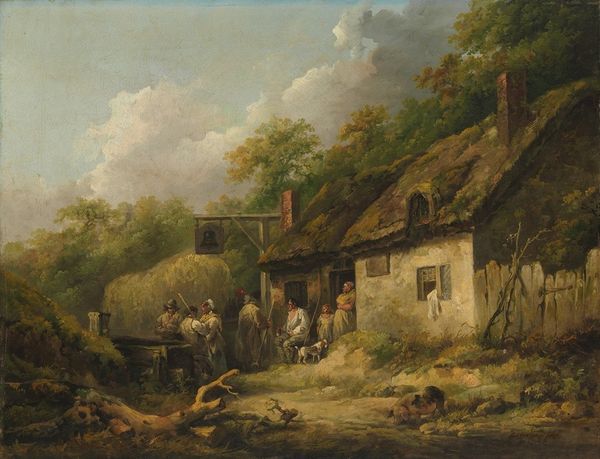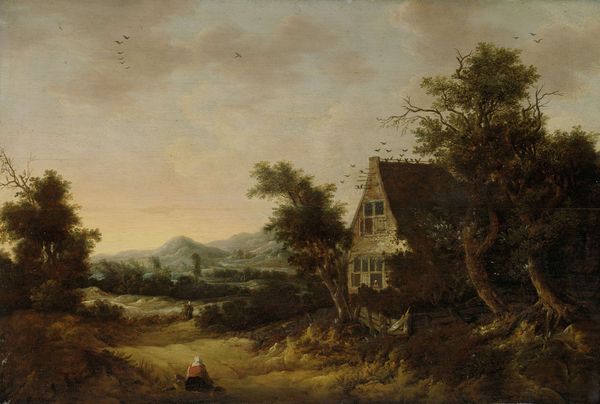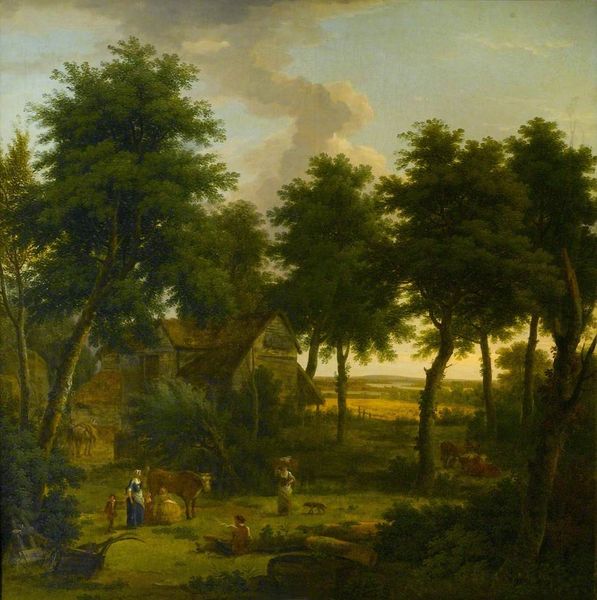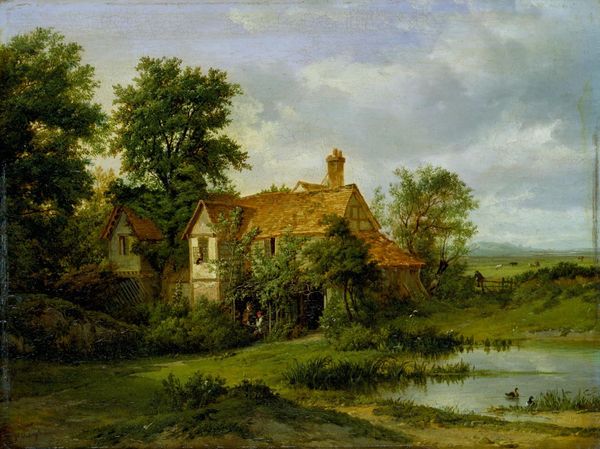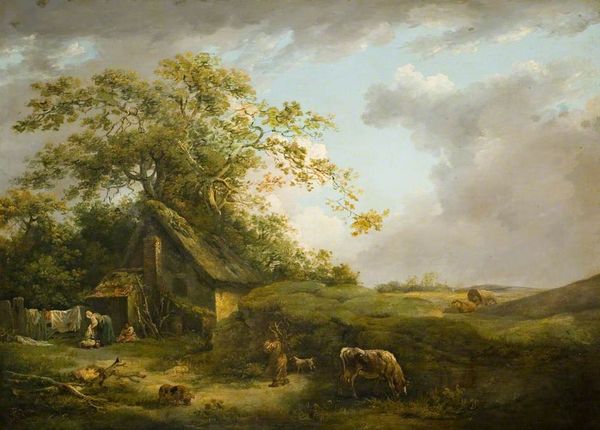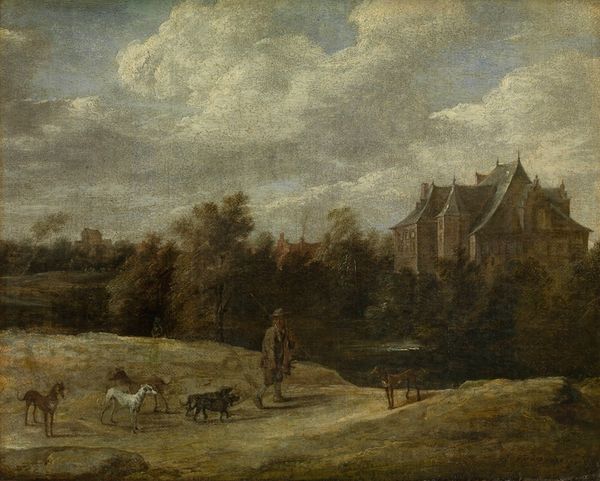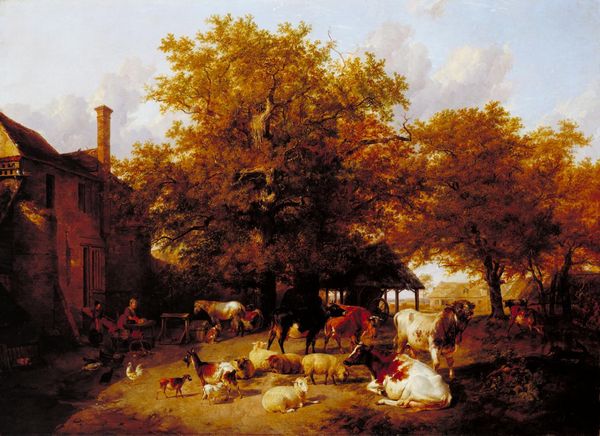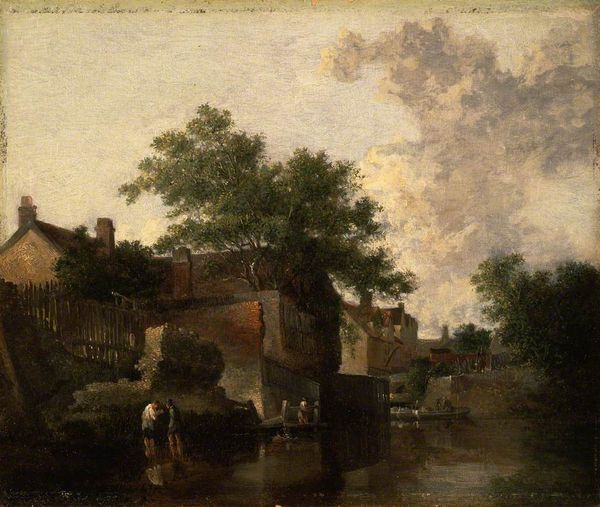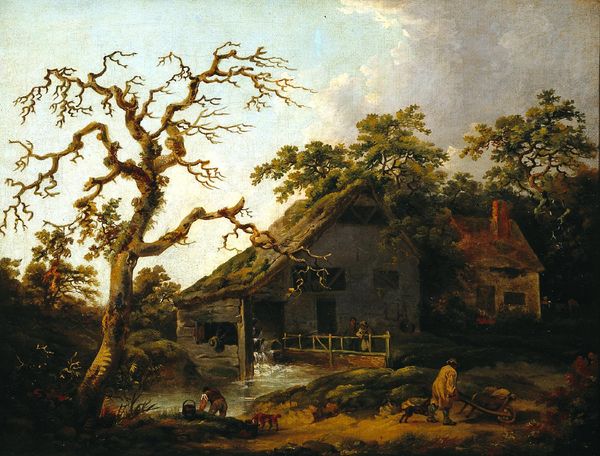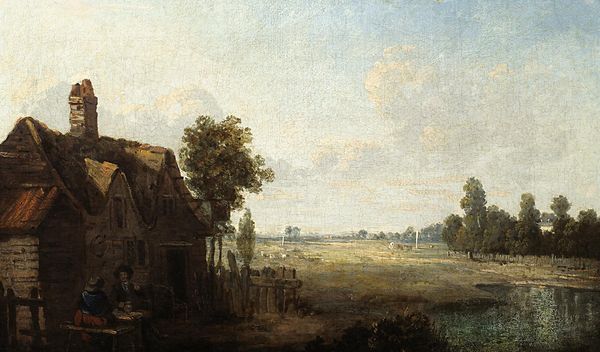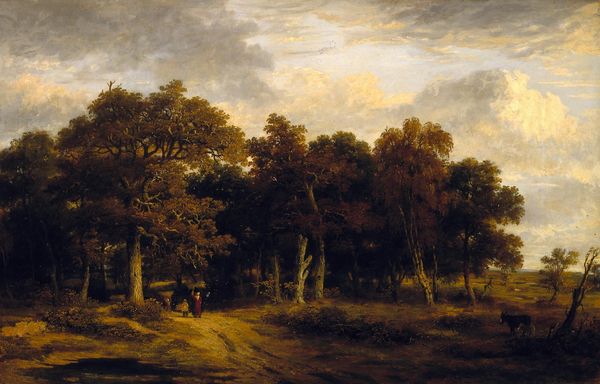
Dimensions: support: 511 x 664 mm frame: 688 x 845 x 108 mm
Copyright: CC-BY-NC-ND 4.0 DEED, Photo: Tate
Curator: This is "Roadside Inn" by George Morland, part of the Tate Collection. The artist, who lived from 1763 to 1804, has captured a scene teeming with life around a rural English inn. Editor: It feels like a stage, doesn’t it? The inn itself almost dissolving into the landscape, while the figures in the foreground feel deliberately posed. Curator: Inns in art are often symbolic crossroads—places of encounter, where social classes mix and travelers share stories, fostering community but also revealing anxieties about social mobility. Editor: Absolutely. And I'm drawn to the way Morland depicts the labor—the resting horses, the weary travelers. You can practically feel the weight of their journeys and how the inn becomes a site of consumption, rest, and probably, quite a lot of social exchange. Curator: It's fascinating how Morland uses the inn sign as a subtle indicator of trade and industry, linking the rural setting to broader economic forces. It speaks to the inn as more than just a refuge, but a symbol of commercial activity. Editor: It really does make you consider the layers of materiality involved—from the very canvas and pigments to the social fabric being woven in that roadside space. A deceptively simple scene. Curator: Indeed, a scene ripe with visual clues about the era's culture. Editor: The more you look, the more you realize the inn itself is a metaphor for all that is exchanged within its walls.
Comments
Join the conversation
Join millions of artists and users on Artera today and experience the ultimate creative platform.
tate 8 months ago
⋮
This work is typical of the rustic landscape scenes most associated with Morland at the height of his prolific career. His paintings of the early 1790s combine fluid brushwork with echoes of the 17th-century Dutch landscapes his artist father compelled him to copy throughout his seven-year apprenticeship. Closer examination of Morland’s apparently sentimental work reveals undercurrents of class tension. His frequent depiction of alehouses in particular did not sit easily with more conservative contemporaries – a reason perhaps why he did not accept commissions and preferred to sell his work through dealers. Gallery label, February 2016
